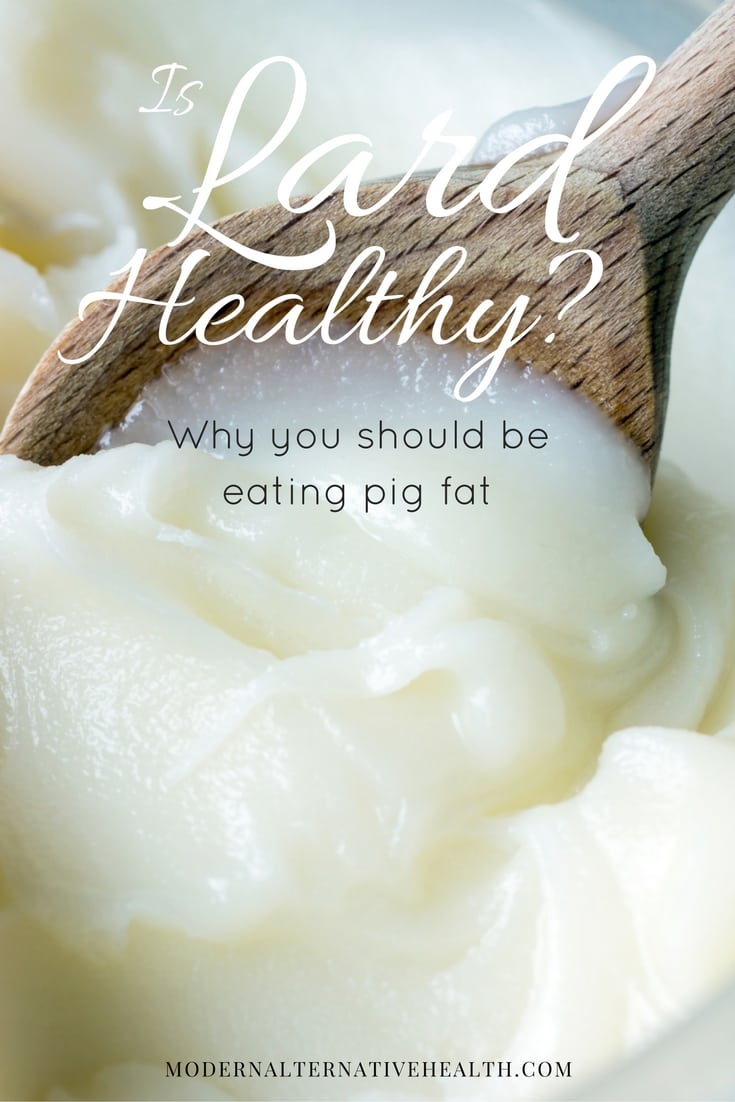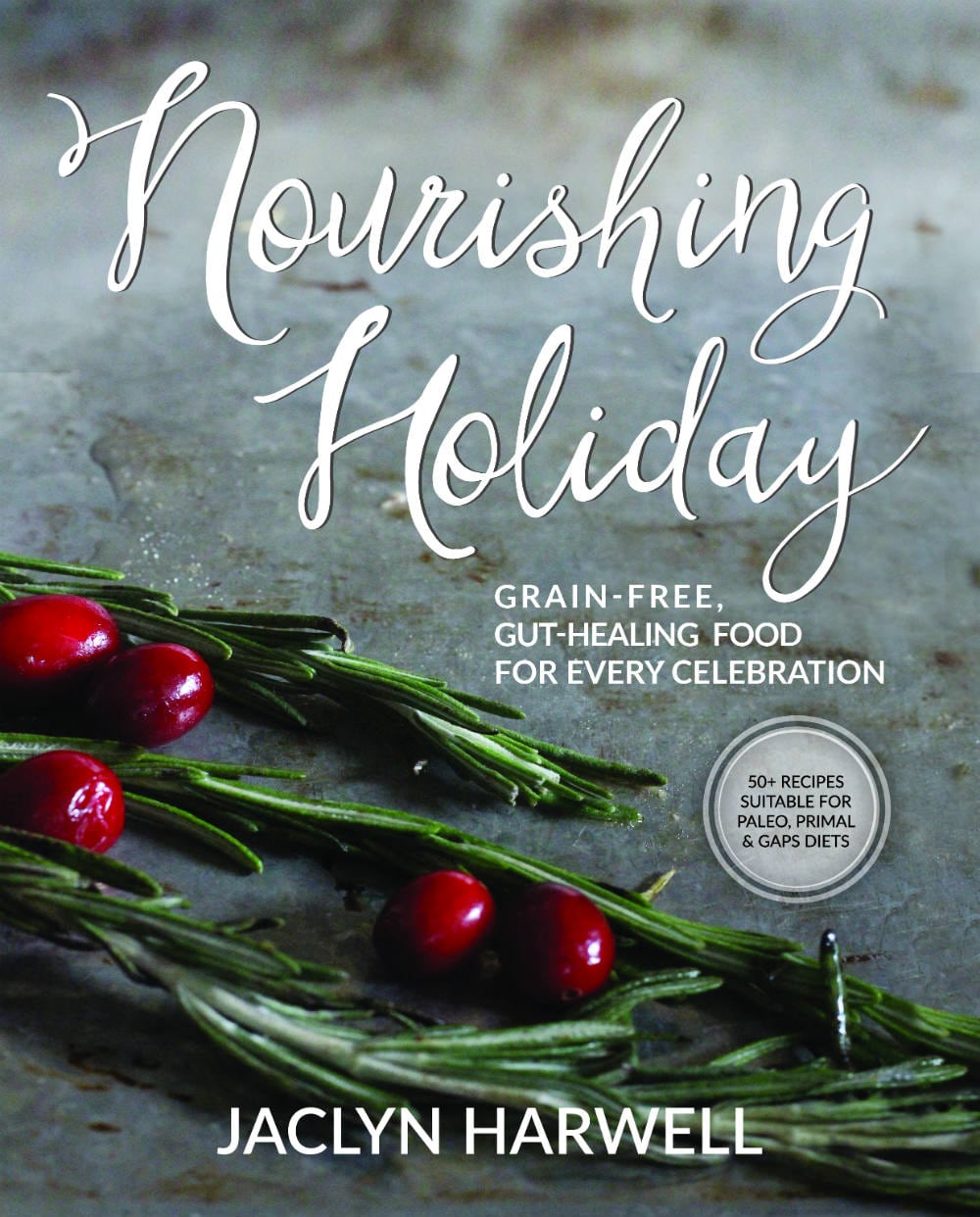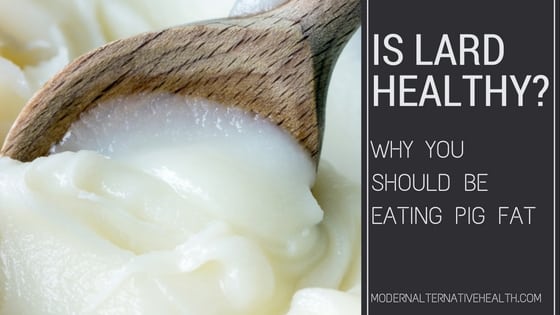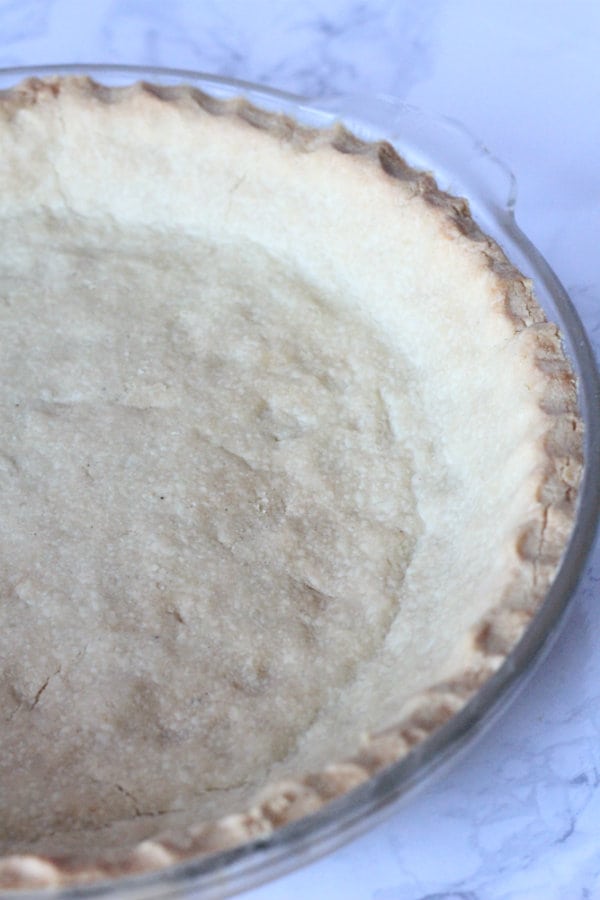By Jaclyn, Contributing Writer
I remember being appalled one Thanksgiving when my sister-in-law used a store-bought pie crust that not only contained a hydrogenated fat, but hydrogenated lard. To me, lard was gross. It was unhealthy. It was fattening. Boy am I glad I learned how wrong I was.
When I first began learning about living a healthy lifestyle, I went through several phases, first eliminating really harmful ingredients, like food dyes and high fructose corn syrup, then switching over to organic foods. For a while, I tried veganism, which was a huge mistake. I thought foods like lard were harmful, but I was wrong. So is lard healthy?
Let me ask you: if lard is so unhealthy, why did our ancestors eat it and enjoy great health? If it’s so harmful, why is modern society not better off for having villainized lard and its healthy, fatty counterparts like butter?
Lard is healthy, and below, I’ll tell you why, then I’ll share an awesome grain-free pie crust recipe containing lard. Read on.
Is Lard Healthy?
You bet it is, and I’ll give you a number of reasons why, but first, let’s clarify something: lard from modern, factory-farmed pigs is not healthy. In fact, no animal products from feed lot operations are healthy. True, pigs are foragers, and tend to eat anything within reach of their snout, but pork products can be very nutritious if the pigs are raised in the right living conditions: clean, with access to sunshine, fresh air, grass and other vegetation, and fed healthy scraps like spoiled milk, which is a great source of lysine, an amino acid pigs need to thrive.
The lard from free range pigs is exponentially more nutritious than its factory-farmed counterpart, which I would never buy.
Here is why you should eat lard:
Pastured Lard is High in Vitamin D
Aside from supplementing cod liver oil, pastured lard is the best food source available of vitamin D. In fact, it’s estimated that one tablespoon of pastured lard contains up to 1,000 IUs of vitamin D!
Most of us are deficient in vitamin D, which means our immune systems aren’t as strong as they should be. This is one of the great health problems of modern, western societies.
Once Crisco launched a smear campaign against traditional fats like lard, consumers began believing that healthy fat found in nature was inferior to man-made fats created in a lab. Health in the western world has declined steadily since.
We traded out a healthy, natural, traditional food for fake, fattening junk, and as a result, vitamin D levels plummeted. Bring pastured lard back to your kitchen and bring your vitamin D levels up! But- vitamin D is a fat-soluble vitamin, which means it needs to be accompanied by fat in order for your body to absorb it.
Isn’t it great when traditional foods contain just the right nutrients our body’s need, in the right combination?
Pastured Lard is Full of Good Fats.
Actually, pastured lard is a good fat.
When I was trying to navigate my way around modern health information, I was convinced that fat was the enemy. I balked at eating coconut oil and butter, which were high in saturated fat. That was going to end up on my hips, ya know?!
Pastured lard is also high in saturated fat. It turns out, saturated fat is not the enemy. In fact, not only is it not the cause of heart disease we’ve all been led to believe it is, it’s actually good for your heart. Pastured lard is approximately 40% saturated fat, which helps to protect and build up cell walls and support hormones.
Additionally, while the majority of western diets are too high in inflammatory omega 6 fats (found in processed vegetable oils), pastured lard has a healthier omega 3 to omega 6 ratio, with very little unstable, polyunsaturated omega 6 fats. The omega 3 fatty acids in lard are easily assimilated by the human body, while plant-based omega fats must be converted by our bodies to usable forms, a feat our bodies are not great at doing.
Sufficient dietary fat is essential for brain health (our brains are made primarily of fat!), the assimilation of vitamins and minerals (isn’t it so nice that fat soluble vitamin D is so nicely packaged up with a rich source of fats in lard?), and immune system health (white blood cells are bolstered to fight thanks to saturated fats).

Pastured Lard Makes a Mean Pie Crust.
Now to the good stuff. You know now why lard is healthy, but do you have any idea what to do with it?
Lard is a wonderful fat to use in a number of baked good recipes like biscuits. It makes perfectly crispy French fries. But my favorite way to use lard? To make perfect pie crust!
I’ve been surprised to start seeing healthy fats like pastured lard popping up at my local grocery store, but I often order lard online. Find healthy, pastured lard here.
Below, you’ll find my Flaky Pie Crust recipe from the cookbook Nourishing Holiday:
Grain-Free Flaky Pie Crust
Makes 1 9” pie crust • Time: 25 minutes
Ingredients:
- 2 cups crispy cashews
- 2 tbsp lard + more for greasing pie plate
- 1 egg
- 2 tbsp coconut flour
Directions:
- Preheat oven to 350º.
- Place cashews, lard and egg into the container of a high powered blender or food processor and process until a sticky dough forms.
- Transfer to a mixing bowl and add coconut flour.
- Stir to combine.
- Grease a 9” pie plate then press the dough so that an even layer covers the bottom and sides of the pie plate.
- Use your fingers to crimp the edges, if desired.
- Bake for 15 minutes.
If you’re interested in more grain-free, gut-healing, healthy holiday recipes, go check out Nourishing Holiday, which just released today!









That’s wonderful article with a lot of useful information for take care healthy.
I’m wondering if I can guest post on your site?
[…] recently declared that lard is healthy, and if you’re new to whole foods eating, that may come as a shock. The fats we eat can have […]
[…] Organically sourced tallow, lard, schmaltz, or butter/ghee. Rich in nutrients, high smoking points, ethically produced, because the […]
[…] to the rendered fat of any animal other than pigs. Rendered pig fat, on the other hand, is called lard. It differs not just in name but in consistency (tallow is firm like a bar of soap whereas lard is […]
[…] Alternative Mama, you probably already know you should eat good fats like butter, coconut oil, and lard. You might already avoid refined white flour in favor of healthier whole grains. But organ meats? I […]
what a good and helpful health and latest information. Thank you for this article.